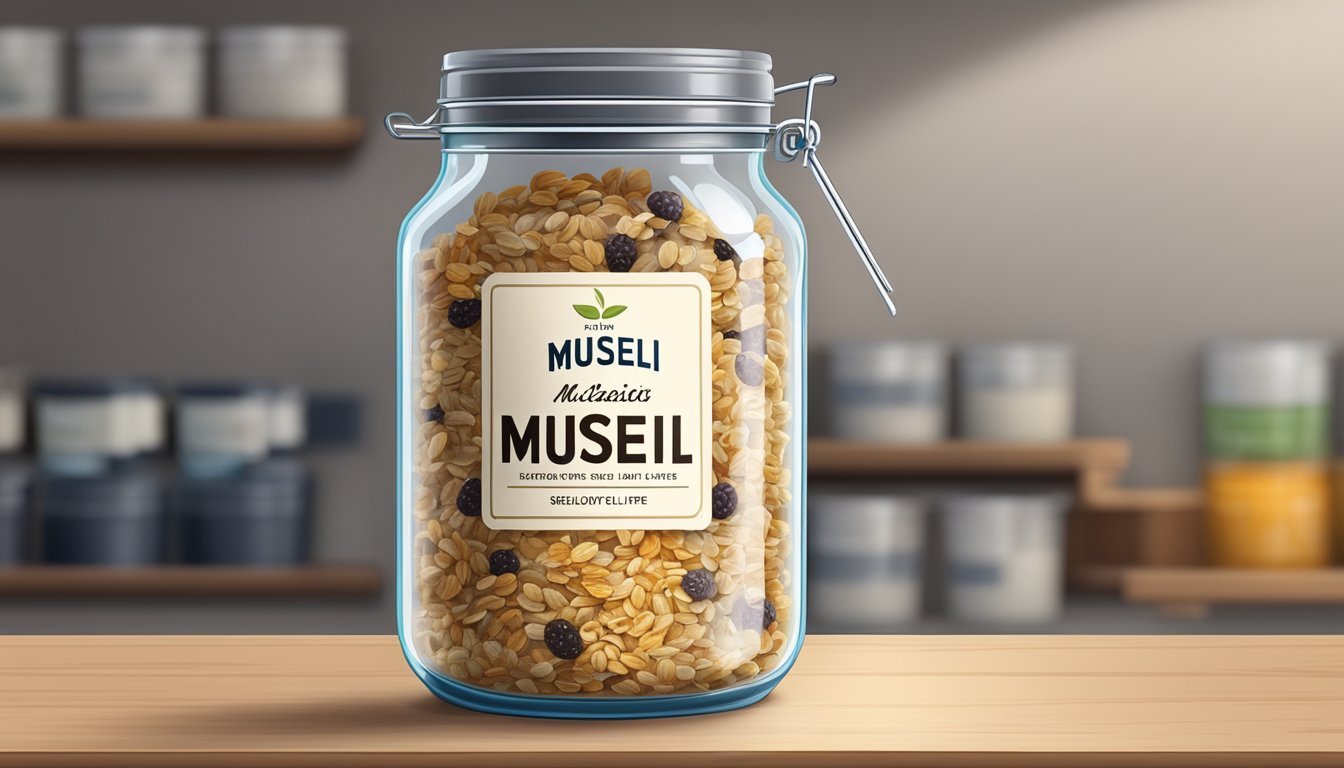How Do You Eat Muesli?
A Simple Guide to Enjoying This Healthy Breakfast
Muesli is a versatile and nutritious cereal that offers a wholesome start to the day, making it a popular breakfast choice for health-conscious individuals. It typically consists of rolled oats, nuts, seeds, and dried fruits (What wine goes well with dried fruits?), and can be enriched with other grains such as wheat flakes or barley. The combination of ingredients in muesli not only provides a rich source of fiber and protein but also integrates a variety of textures and flavors, appealing to a wide range of palates.
Eating muesli can be an enjoyable experience as it allows for customization based on personal preferences. It can be served cold, soaked overnight in milk or yogurt, offering a refreshing and creamy texture for those who prefer a chilled breakfast. For a warm and comforting meal, muesli can also be cooked with milk or water, simmered until it reaches the desired consistency, and then enhanced with fresh fruit, nuts, or a drizzle of honey. This adaptability makes it a suitable option for both quick and leisurely mornings.
While muesli has its roots in Swiss cuisine, it has been embraced globally due to its health benefits and convenience. Each serving provides essential nutrients that are vital for maintaining energy levels throughout the day. As dietary habits evolve and attention to nutritious eating increases, muesli stands out as a smart and satisfying choice for an everyday breakfast or an on-the-go snack.
Understanding Muesli
Muesli is a versatile breakfast dish with rich history, various types, and considerable nutritional value, offering a balance of fiber, protein, and healthy fats.
Origins and History
Muesli was developed by a Swiss physician, Dr. Maximilian Bircher-Benner, at the end of the 19th century. It originally served as a nutritious meal for his patients. The traditional Swiss muesli is a blend of oats soaked overnight, combined with fresh fruits and nuts.
Types of Muesli
There are generally two types of muesli:
Traditional Muesli: Consists of raw rolled oats, nuts, seeds, and dried fruit. It is often enjoyed soaked in milk or yogurt.
Toasted Muesli: Similar to granola, it includes a mixture of grains, nuts, seeds, and dried fruit that is baked until crispy.
Different variations may include whole grains like barley or rye, providing additional flavor and nutrients.
Nutritional Value
Muesli is acknowledged for its health benefits. Key nutritional highlights include:
Fiber: Essential for digestive health, often derived from whole grains like oats and seeds.
Protein: Vital for muscle repair and growth, found in the nuts and grains within muesli.
Healthy Fats: Nuts and seeds in muesli provide omega-3 and other unsaturated fats.
Vitamins and Minerals: Muesli contains iron and a spectrum of B vitamins, contributing to overall health.
A serving of muesli can offer a balanced burst of energy without excessive calories or cholesterol, making it a suitable choice for a heart-healthy diet.
Preparation Methodologies
Muesli is a versatile dish that can be prepared in various ways to suit individual tastes. It involves a simple mix of raw ingredients, and can be served both hot and cold, with several liquid options like water, milk, or yogurt.
Basic Muesli Recipe
A basic muesli recipe comprises a blend of oats, nuts, seeds, and dried fruits. To prepare, one simply combines these ingredients in a bowl to enjoy muesli in its raw and uncooked form. This straightforward recipe serves as a foundation for both hot and cold muesli variations.
Hot Muesli Options
To enjoy muesli warm, there are two common cooking methods:
On the Stovetop:
Combine equal parts muesli and liquid (water or any type of milk) in a pot.
Simmer over medium-high heat for about 3-4 minutes.
Remove from heat and let the muesli stand for 2 minutes before serving.
In the Microwave:
Mix equal parts muesli and liquid (water or any type of milk) in a microwave-safe bowl.
Cook on high for 1 minute, then stir.
Allow sitting for an additional 2 minutes to absorb the liquid.
Cold Muesli Varieties
Cold muesli serves as a refreshing breakfast or snack, with these preparation methods:
Classic Cold Muesli:
Eaten with cold milk or yogurt poured over the raw mixture, allowing each bite to have a crunchy and creamy texture.Overnight Oats:
Take equal parts of muesli and your chosen liquid (commonly milk, yogurt, or a milk alternative).
Combine in a bowl and cover.
Place in the refrigerator to soak overnight, resulting in a thick, porridge-like consistency.
Muesli Customization
Crafting the perfect bowl of muesli involves personal taste preferences and attention to health. By selecting a variety of ingredients and adding natural sweeteners or flavors, one can enjoy a healthy breakfast tailored to individual liking.
Choosing Your Ingredients
Muesli serves as a versatile foundation for a nutritious breakfast that can be customized with a range of toppings to enhance its texture and taste. For a start, one can choose from a variety of grains, such as oats or barley. Some may prefer gluten-free options; in such cases, grains like buckwheat or quinoa make excellent choices. To increase the nutritional profile, adding nuts and seeds provides healthy fats and protein. Here are some suggestions for toppings:
Fresh fruit: Sliced banana, apple, berries
Dried fruits: Raisins, sultanas, apricots
Nuts: Almonds, walnuts, pecans
Seeds: Pumpkin seeds, sunflower seeds, chia seeds
These components not only contribute to the overall healthfulness of the meal but also add various textures, from the crunch of nuts to the chewiness of dried fruit.
Sweeteners and Flavors
To enhance the muesli's taste profile without compromising on the health aspect, one can consider adding natural sweeteners and flavors. Here’s a list of commonly used options:
Honey or maple syrup: For a touch of natural sweetness
Cinnamon: Adds warmth and a hint of spice
Lemon juice: Infuses a fresh, citrusy zing
Integrating these flavors allows for a balanced dish that caters to both the palate and nutritional needs. The key is to use these sweeteners sparingly to keep the breakfast option as healthy as possible.
Serving and Consumption
When it comes to muesli, the versatility in serving and consumption methods allows it to easily integrate into any meal, providing a healthy option that can be enjoyed in a myriad of ways.
Ideal Pairings and Combinations
Muesli pairs exceptionally well with dairy and non-dairy milk, serving as a traditional breakfast staple. To enhance its nutritional profile, one can add fresh fruit, such as sliced bananas or berries, and nuts like almonds or walnuts for added crunch and nutritional benefits. Incorporating nut butters such as almond butter adds creaminess and a boost of protein. Yogurt, whether Greek or regular, can be combined with muesli for a probiotic-rich start to the day.
Creative Serving Suggestions
Muesli's adaptability extends into various culinary creations. It works splendidly when blended into a smoothie for a fiber-rich drink or as a crunchy topping on dessert items like ice cream. One can bake muesli into bars, muffins, and cookies for convenient snacking options. For a savory twist, it can be incorporated into lunch dishes such as salads, providing texture and substance.
Eating Muesli Throughout the Day
Muesli is not confined to breakfast alone; it serves as a wholesome snack or light dinner when quick yet nutritious eating options are needed. By customizing the additions, muesli's role in the diet can shift from a hearty morning meal to a satisfying dessert base—think muesli with a dollop of warm fruit compote—as the day progresses.
Storage and Shelf Life
Proper storage of muesli is essential to maintain its freshness and extend its shelf life. Key practices involve temperature control, airtight containers, and moisture prevention to preserve the quality of the muesli.
Preserving Freshness
To ensure muesli retains its taste and nutritional quality, it must be stored in an airtight container. This shields it from moisture and other contaminants that could spoil its taste and texture. Temperature control is critical; muesli should be kept in a cool, dry place below 77°F (25°C) to slow down the oxidation of fats and oils that could lead to rancidity. Higher temperatures can accelerate aging, so muesli stored at 30°C would reach its aging process three times faster than at cooler temperatures.
Airtight Container: Seals out moisture and contaminants.
Cool Temperature: Below 77°F (25°C) recommended.
Dark Location: Protects from light that can degrade nutrients.
Pre-Make and Store Tips
Muesli's versatility allows for its use in various pre-made forms like overnight oats or incorporation into baked goods and granola bars. When preparing overnight oats, muesli can be combined with a liquid such as milk or yogurt and stored in the refrigerator where it will soften and intensify in flavor. For baked goods and granola bars, muesli provides texture and nutrition; these can be stored in an airtight container once cooled, ideally in a cool, dark place to preserve their taste and stability.
Overnight Oats: Refrigerate in airtight containers for up to 5 days.
Baked Goods/Granola Bars: Cool completely, then store in airtight containers to maintain freshness.
Health and Dietary Considerations
When consuming muesli, individuals should be aware of their own dietary needs and health goals. Muesli can fit into various dietary patterns, but it's paramount to consider its components—ranging from fiber content to calorie count—for effective weight management, adherence to dietary restrictions, and support for digestion and metabolism.
Weight Management
Muesli can be a part of a weight management diet due to its high fiber content which may help in feeling full longer. However, portion control is crucial as muesli can be calorie-dense, especially when combined with high-calorie additions such as nuts. To aid in controlling calorie intake, one should opt for a muesli with a low-sugar profile and consider serving sizes.
Dietary Restrictions
For those with dietary restrictions, muesli offers versatile options:
Dairy-Free/Vegan: Muesli can be enjoyed with non-dairy alternatives such as almond or soy milk.
Gluten-Free: Gluten-free muesli is available for individuals with celiac disease or gluten sensitivity.
Nut Allergies: Some muesli blends exclude nuts, catering to those with allergies.
Benefits for Digestion and Metabolism
The high fiber content in muesli benefits digestion and can help regulate metabolism. It often contains both soluble and insoluble fiber from oats and other grains, aiding in bowel health. Additionally, muesli with a variety of whole grains, seeds, and nuts provides a wealth of nutrients that contribute to overall metabolic health.
Beyond Breakfast
While muesli is traditionally a breakfast dish, its versatility extends its use into various meals and recipes throughout the day. From snacks and baked goods to savory dinner options, muesli's blend of oats, nuts, seeds, and dried fruits make it a nutritious addition to many dishes.
Muesli in Baked Goods
Incorporating muesli into baked goods not only adds a healthful twist but also provides texture and flavor. Muesli can be added to muffin and cookie recipes, replacing a portion of the flour with equal parts of muesli. Additionally, one can make granola bars by mixing muesli with honey, nut butter, and other preferred ingredients, then baking until set.
Alternate Muesli Creations
For a mid-day snack, muesli can be turned into a crunchy trail mix by adding a variety of nuts and seeds. Combining muesli with yogurt or forming it into balls with honey and nut butter creates satisfying bites. Transform it into a pudding by soaking in milk or plant-based alternatives until it reaches a creamy texture.
Muesli as a Dinner Option
Though not conventional, muesli can make its way into dinner dishes. Prepare hot muesli as a savory side by cooking it with vegetable broth and herbs. For a unique twist on the classic Bircher muesli, one might blend soaked muesli with grated vegetables and serve it alongside a main course, offering a wholesome and hearty complement to the meal.
Conclusion
Muesli is a nutritious and versatile option for a healthy breakfast that caters to various dietary preferences and lifestyles. Individuals can enjoy muesli cold by soaking it in milk or yogurt overnight, which softens the grains and integrates the flavors of the added components, such as fruits and nuts.
For those who prefer a warm meal, cooking muesli with an equal ratio of liquid – water or a milk of one's choosing – is a simple process. On the stovetop, this involves simmering the mixture for a few minutes, and in the microwave, a quick one-minute heat suffices.
Nutritional Benefits:
Muesli typically contains whole grains, nuts, seeds, and dried fruits, making it a fiber-rich food that can aid digestion.
With the addition of nuts and seeds, muesli becomes a good source of healthy fats and protein, contributing to satiety and energy levels throughout the day.
By customizing toppings, individuals can enhance the nutritional profile of their muesli, adding fresh fruit for vitamins or additional nuts for more protein and healthy fats.
Remember that the true beauty of muesli lies in its adaptability. One can adjust the ingredients to suit dietary restrictions, personal taste preferences, or specific health goals. Whether enjoyed cold or hot, muesli remains a wholesome and satisfying breakfast choice for those seeking both health benefits and convenience.




